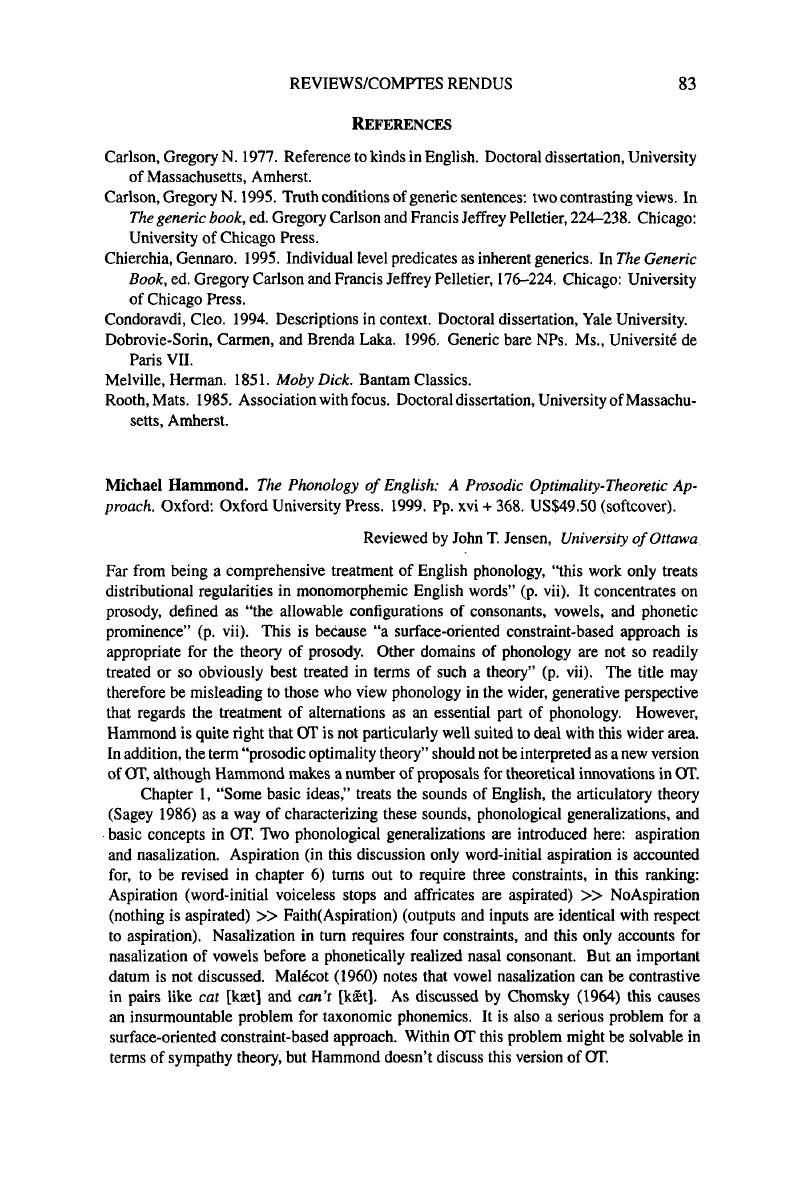McCarthy, John J., and
Prince, Alan S..
1995.
Faithfulness and reduplicative identity.
University of Massachusetts Occasional Papers in Linguistics 18: Papers in Optimality Theory, ed.
Beekman, Jill,
Dickey, Laura and
Urbanczyk, Suzanne,
249–
384. Graduate Linguistics Students Association,
University of Massachusetts,
Amherst.
Google Scholar 